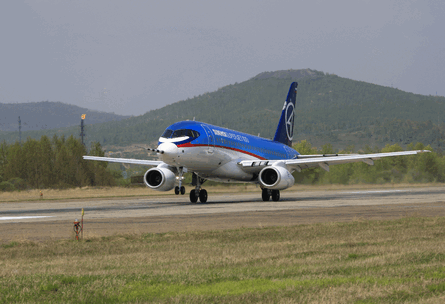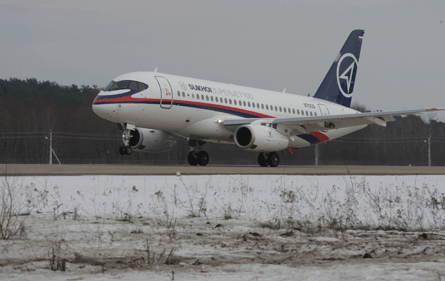Superjet International faces a challenge. It is all too aware that its small marketing and product support team in North America will not find it easy to promote the attributes of the Sukhoi Superjet 100 and convince potential customers toorder the aircraft.
Most carriers in North America are hunkered down to survive the global downturn and do not envisage ordering any 95- to 100-seat aircraft in the near term. US fleets are shrinking - the Federal Aviation Administration's 2009 forecast seesthe US commercial fleetfalling by a net 637 aircraft after a drop of about 470 in 2008.
Weak demand is not the only challenge for Superjet in North America. The company - a Venice-based joint venture between Sukhoi and Alenia for marketing the Superjet 100 - has to introduce a relatively unknown Russian-built jet to airlines that have ushered in 70-to100-seat aircraft from Superjet competitors Bombardier and Embraer.
 |
|---|
© Sukhoi |
But Superjetbusiness development vice-president John Buckley is unfazed. He says he would be just as enthusiastic "no matter what market phase the USA is in.In my opinion, we have a really efficient aircraft and I am enjoying the opportunity to promote it in the USA."
An ATR veteran who headed the company's North American sales efforts for 20 years, Buckley says one element of the marketing strategy being crafted by Superjet is to emphasise how advanced the aircraft programme is.
A year ago, many industry analysts thought it unlikely that most new aircraft programmes would reach the marketquickly, says Buckley. He believes Superjet's flight testing of two aircraft,with a third to reach the flightline soon, gives it an advantage over the Bombardier CSeries small airliner and Mitsubishi MRJ regional jet, which "are far in the future, with the normal promises associated with such future programmes".
EMBRAER CHALLENGE
Buckley knows Superjet's main competitor for North American customers is the Embraer 190. Embraer says that, as of December 2008, accumulated orders for its E-170/190 families made up 47% of the North American market.
But Superjet claims a "13% economic improvement when compared to that aircraft [the E-190]", says Buckley. "Such an improvement is normal, given that we are entering the market later on. It will be difficult for the future projects to improve on those numbers and we look forward to the competition."
Another key competitive advantage Buckley sees for Superjet is that its Powerjet SaM-146 engine has 20% fewer parts than the GE CF34-10 on the E-190, leading to fewer overhauls and better reliability.
Noting that the engine integrations "seems to be very good", Buckley says Snecma and its partner, NPO Saturn, have built an engine that matches the Superjet's nacelle "for best results".
 |
|---|
© Marina Lystseva |
Part of Superjet's push in North America is "educating the industry about how well our airframe and engine work", says Buckley. He adds that the SaM-146's fuel burn is also better than expected.
As Buckley tries to widen recognition of Superjet in North America, he believes Snecma's involvement in the SaM-146 could open doors because of its involvement, through its joint venture with GE, on the CFM International engines powering Airbus A320s and Boeing 737s.
Snecma is a known supplier to North American operators, says Buckley, and it is key for those carriers to see that a provider they know and have had favourable experiences with is part of the Superjet programme.
Buckley is not concerned by initial customer discussions about a Russian-built aircraft and says some airlines are surprised the jet is in such an advanced stage of development. He says Superjet has "sort of moved quietly" compared with Bombardier and Mitsubishi, which have been more vocal in their efforts.
But being first to market may not be enough to sway customers in the downturn. Hamlin Transportation president and former director of strategic planning for Airbus North America, George Hamlin, says Superjet would face an uphill battle in good times, but in the current climate it is "not impossible, but difficult" to win deals in North America.
Source: Flight International























